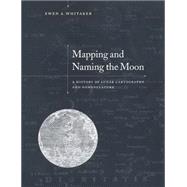
| Preface | |
| Introduction | |
| Part I. First Era: From Prehistoric Images to Archetype Map: 1. Pre-telescopic lunar observations | |
| 2. Early telescopic observations of the Moon | |
| 3. Van Langren (Langrenus) and the birth of selenography | |
| 4. Six more years of sporadic activity | |
| Part II. Second Era: From Archetype to Maturity: 5. 140 years of sporadic activity | |
| 6. A globe, tree rings, and a city | |
| 7. Lunar cartography comes of age | |
| Part III. Third Era: From proliferation to standardisation: 8. Lunar mapping in the Victorian period | |
| 9. Nomenclature gets international attention | |
| Part IV. The Space Age Demands Changes: 10. Setting up guidelines | |
| 11. Planets and satellites set the rules. Appendices 1 - 22. |
The New copy of this book will include any supplemental materials advertised. Please check the title of the book to determine if it should include any access cards, study guides, lab manuals, CDs, etc.
The Used, Rental and eBook copies of this book are not guaranteed to include any supplemental materials. Typically, only the book itself is included. This is true even if the title states it includes any access cards, study guides, lab manuals, CDs, etc.